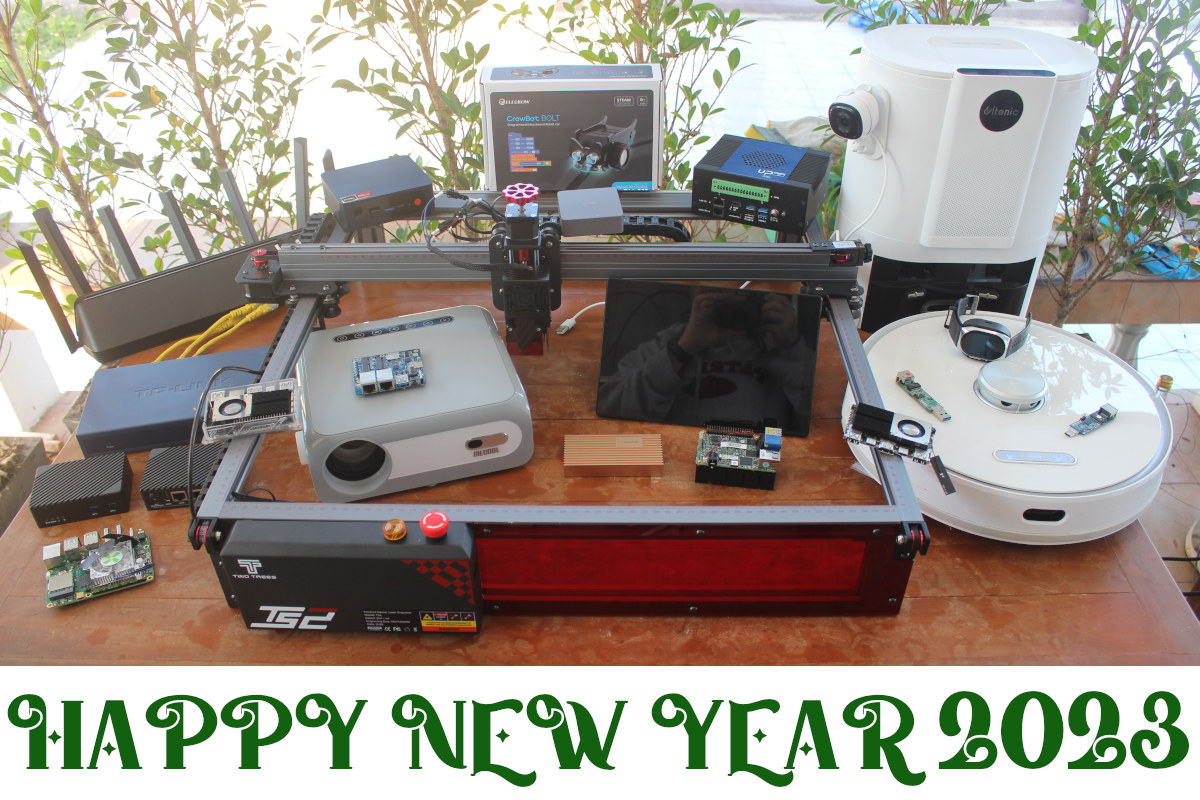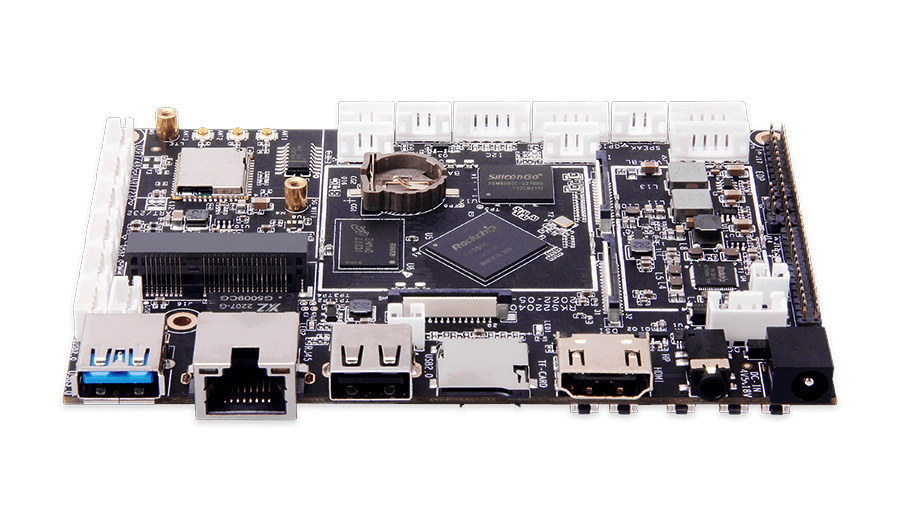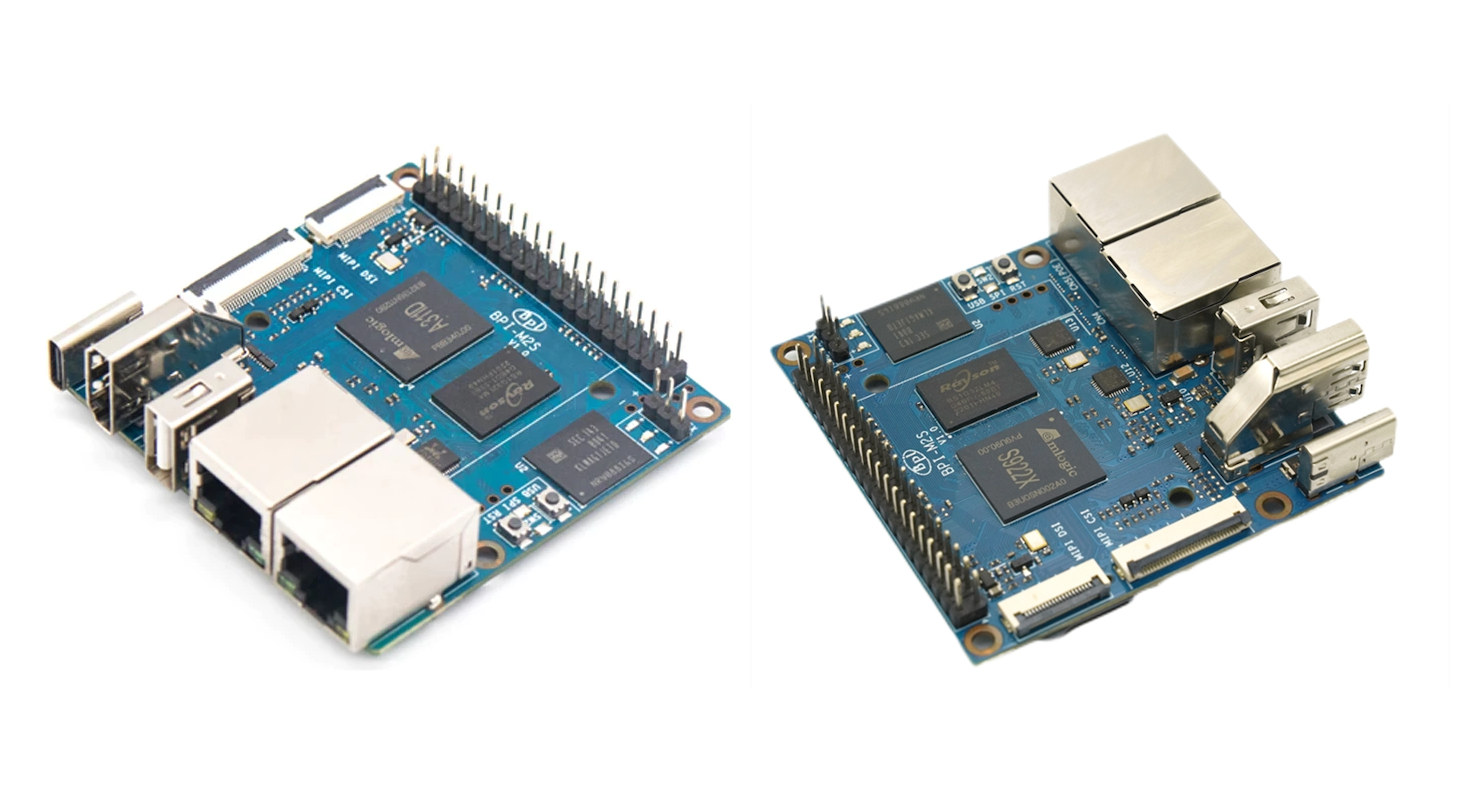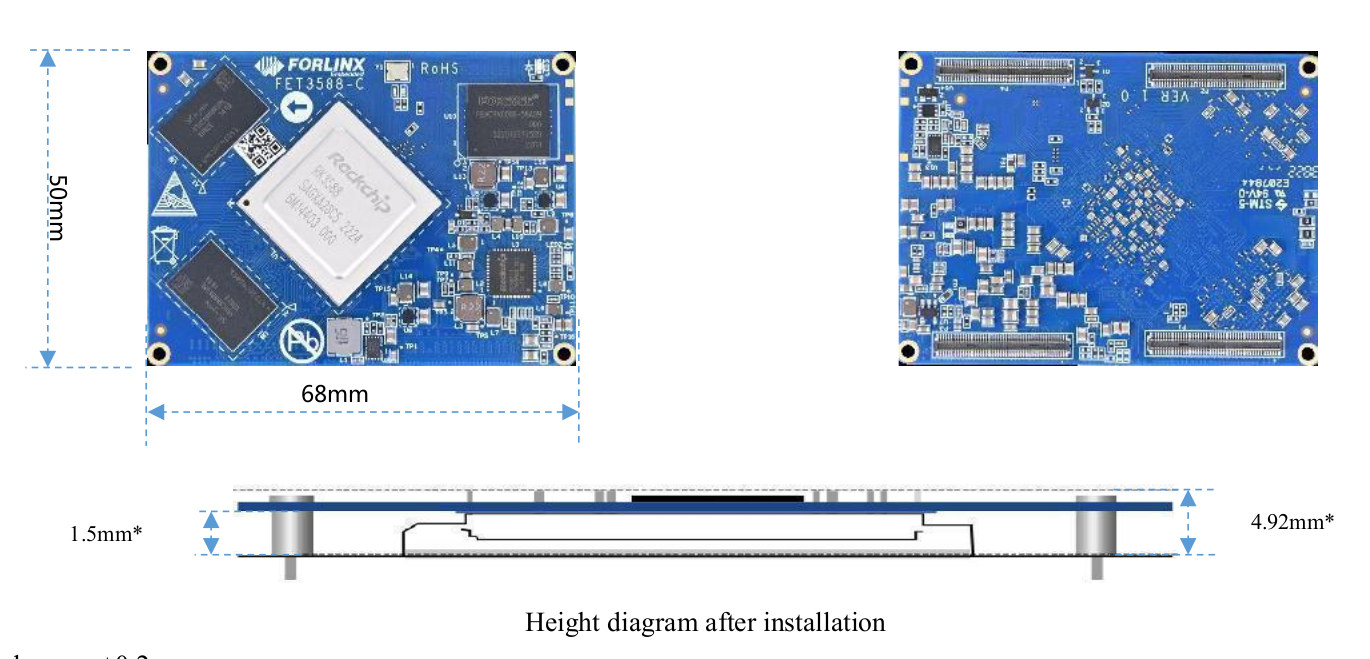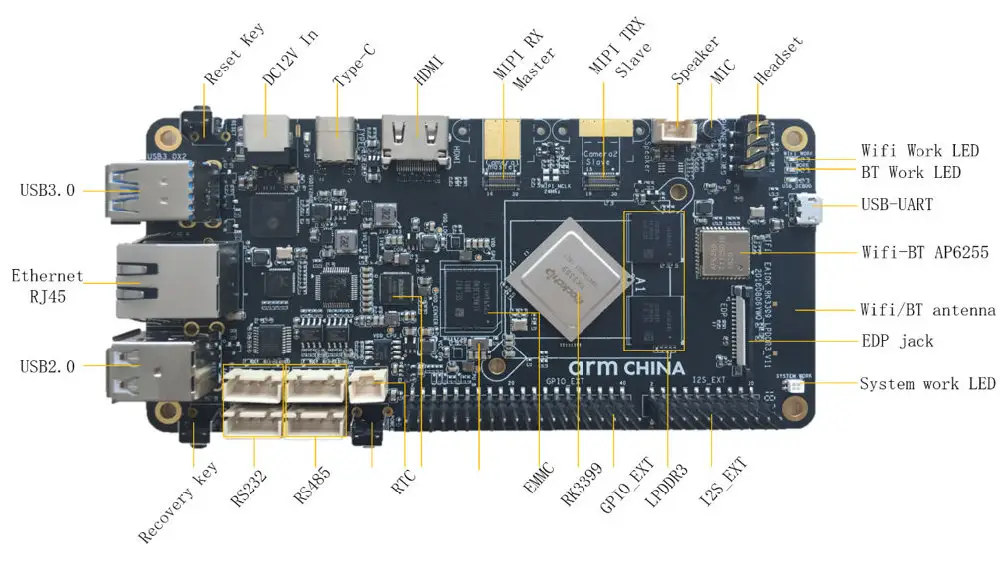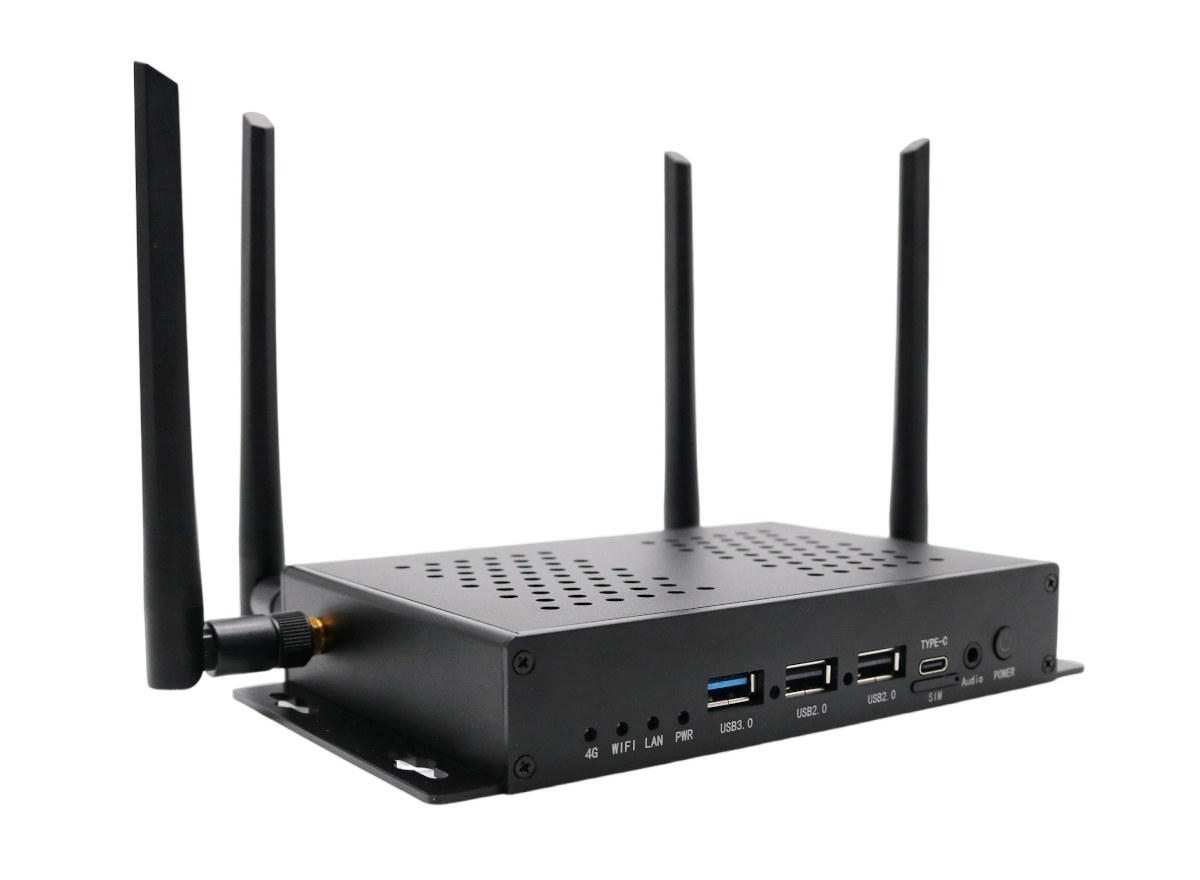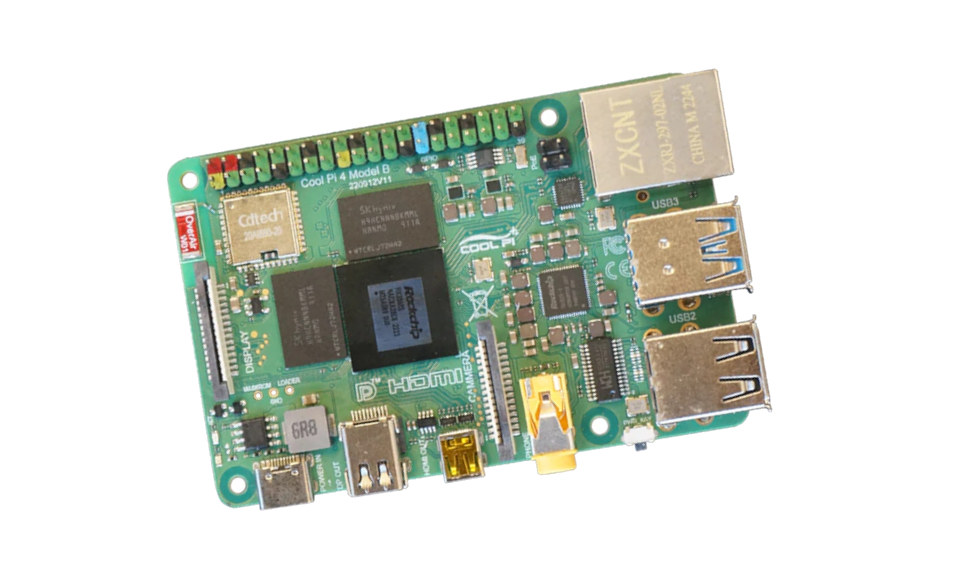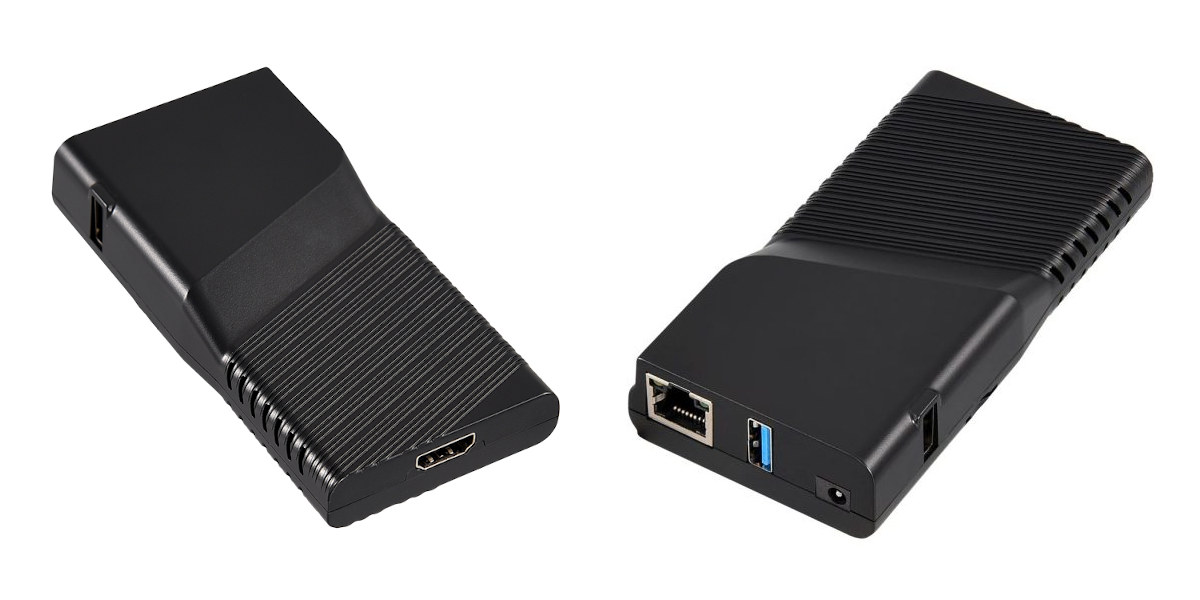It’s the last day of the year and the time to look at some of the highlights of 2022, some traffic statistics from CNX Software website, and speculate on what 2023 may bring us. The semiconductors shortage continued in 2022, but things are looking brighter in 2023 with the full reopening of the world mixed with forecasts of difficult economic times that should keep the demand/supply equation in check. On the Arm processor front the biggest news of the year, at least in this corner of the Internet, was the launch of the Rockchip RK3588 octa-core Cortex-A76/A55 processor together with interesting single board computers that we’ll discuss below. Announced last year, the Amlogic A311D2 octa-core Cortex-A73/A53 was finally made available in a few SBC’s, and we finally got some news about the Amlogic S928X Cortex-A76/A55 SoC showcased in 8K TV boxes, but we have yet to see it in action. […]
Geniatech DS-3566 digital signage board is powered by a Rockchip RK3566 SoC
Geniatech DS-3566 is a board based on Rockchip RK3566 designed for digital signage applications with a low-profile, multiple video interfaces such as HDMI, LVDS, eDP, and MIPI DSI, and plenty of headers and connectors for expansion. The single board computer ships with up to 8GB RAM, 128GB eMMC flash, and supports Gigabit Ethernet, WiFi 5, Bluetooth 4.1, as well as cellular connectivity as an option. Some of the interfaces available through connectors include RS232, RS485, CAN Bus, I2C, SPI, etc… Geniatech DS-3566 specifications: SoC – Rockchip RK3566 quad-core Arm Cortex-A55 processor @ 1.8 GHz with Arm Mali-G52 EE GPU, 0.8 TOPS NPU System Memory – 2GB to 8GB LPDDR4 Storage – 16GB to 128GB eMMC flash, MicroSD card slot Video Interfaces 1x HDMI 2.1 up to 4Kp60 1x LVDS header and backlight header 1x eDP header and backlight header 1x 4-lane MIPI DSI connector Camera – 1x 4-lane MIPI CSI […]
$96+ Banana Pi BPI-M2S Amlogic A311D/S922X SBC offers dual GbE, optional PoE and WiFi 5
The Banana Pi PPI-M2S is a single board computer (SBC) powered by either Amlogic A311D or S922X processor with 4GB RAM, 16GB eMMC flash, HDMI 2.1 and MIPI DSI display interfaces, one MIPI CSI camera connector, two Gigabit Ethernet ports with one PoE capable, as well as optional WiFi 5 & Bluetooth support. When we first covered the Banana Pi BPI-M2S over a year ago, all we had were some 3D renders of the board and some preliminary specifications. The company has now manufactured the board, provided some documentation, and started to take orders for the board on Aliexpress for $95.79 or $100 depending on whether Amlogic S922X or A311D is selected. Banana Pi BPI-M2S specifications: SoC – Amlogic A311D or S922X hexa-core processor with 4x Arm Cortex-A73 cores @ 2.21 GHz, 2x Arm Cortex-A53 cores @ 1.8 GHz, Arm Mali-G52 MP4 (6EE) GPU with OpenGL ES 3.2, Vulkan 1.0 […]
Rockchip RK3588 system-on-module exposes 400 pins through high-density connectors
Forlinx FET3588-C is a relatively compact Rockchip RK3588 system-on-module measuring 68x50mm and exposing many of the processor’s I/Os through four 100-pin high-density connectors. The module ships with up to 8GB LPDDR4x and 64GB eMMC flash, and the company also provides the OK3588-C development board for evaluation with HDMI output and input, two MIPI DSI interfaces, five camera connectors, dual Gigabit Ethernet, M.2 sockets for WiFi and 4G/5G cellular connectivity, and more. Forlinx FET3588-C RK3588 system-on-module Specifications: SoC – Rockchip RK3588 octa-core processor with 4x Arm Cortex-A76 cores @ up to 2.4 GHz, 4x Arm Cortex-A55 cores, Arm Mali-G610 MP4 GPU with support for OpenGL ES3.2, OpenCL 2.2, Vulkan1.1, 6 TOPS NPU, 48MP ISP, 8Kp60 video decoding, 8Kp30 video encoding System Memory – 4GB or 8GB LPDDR4x (16GB planned) Storage – 32GB or 64GB eMMC 5.1 flash (128GB planned) Carrier board interface – 4x high-density 100-pin board-to-board connectors Storage – Up […]
Open AI Lab EAIDK-610 devkit targets computer vision education with OpenCV
Open AI Lab EAIDK-610 is an embedded AI development kit powered by a Rockchip RK3399 processor, recently added to Linux 6.1 and described as “popularly used by university students” in the kernel changelog. But I had never heard about it, and it turns out it’s because it’s popular with students in China, and most documentation is written in Chinese. The development board is equipped with 4GB LPDDR3, a 16GB eMMC flash, HDMI video output, Gigabit Ethernet and WiFi 5, a few USB ports, a 40-pin GPIO header, and more. EAIDK-610 specifications: SoC – Rockchip RK3399 System Memory – 4GB LPDDR3 Storage – 16GB eMMC flash and MicroSD card slot Video Output HDMI 2.0 up to 4Kp60 MIPI DSI up to 1280×720 @ 60 fps 4-lane eDP 1.3 Audio – Speaker header, built-in microphone, 3.5mm audio jack, I2S header, digital audio via HDMI Camera I/F – 2x MIPI CSI up to […]
Mekotronics R58X-4G – A Rockchip RK3588 mini PC with 4G LTE and PoE support
Mekotronics R58X-4G is an update to the company’s R58X Rockchip RK3588 mini PC with support for 4G LTE mini PCIe modules and PoE power. The computer is sold with up to 16GB RAM, up to 128 GB eMMC flash, support SATA and NVMe storage, offers two 8K capable HDMI and DisplayPort video outputs, one 4K HDMI input, two Gigabit Ethernet ports, a WiFi 6 and Bluetooth 5.2 module, a few USB ports, and a terminal block with RS232 and RS485 interfaces. Mekotronics R58X-4G specifications: SoC – Rockchip RK3588 octa-core processor with four Cortex-A76 cores @ 2.4 GHz, four Cortex-A55 cores @ 1.8 GHz, an Arm Mali-G610 MP4 GPU, a 6TOPS NPU, 8K 10-bit decoder, 8K encoder System Memory – 4GB, 8GB, or 16GB LPDDR4x Storage 32GB, 64GB, or 128GB eMMC 5.1 flash 1x SATA 3.0 connector + SATA power connector M.2 2280 (PCIe 3.0) socket for NVMe SSD Video Output […]
Cool Pi 4 Model B – A much faster alternative to Raspberry Pi 4 SBC
Cool Pi 4 Model B is a powerful alternative to Raspberry Pi 4 SBC with mostly the same form factor and interfaces but equipped with a Rockchip RK3588S octa-core Cortex-A76/A55 processor that will run circles around the Broadcom BCM2711 SoC found in the Raspberry Pi board. We’ve already reviewed Rockchip RK3588/RK3588S single board computers and mini PC such as Rock 5B, Khadas Edge2 Pro, and Mekotronics R58, and we were impressed by the performance, but if you prefer to have such a board in Raspberry Pi 4 form factor, then the Cool Pi 4 Model B might be for you. Cool Pi 4 Model B specifications: SoC – Rockchip RK3588S octa-core processor with 4x Cortex-A76 cores @ up to 2.4 GHz, 4x Cortex-A55 cores, an Arm Mali-G610 GPU with OpenGL ES 3.2, OpenCL 2.2, and Vulkan 1.1 support, 8Kp60 video decoder for H.265/AVS2/VP9/H.264/AV1 codecs, 8Kp30 video encoder, and a 6 […]
Rikomagic RKM V7 – A Rockchip RK3568-powered Android 11 HDMI TV stick
Rikomagic RKM V7 is an HDMI TV stick running Android 11 on a Rockchip RK3568 quad-core Cortex-A55 processor with 2GB RAM, 16GB flash, Gigabit Ethernet and WiFi 5/6 connectivity, as well as HDMI female port, and two USB ports. While the device could be used as a general-purpose Android mini PC, it is also suitable as a digital signage player with features such as RTC for time on/off control, screen rotation support, and a watchdog timer to ensure continuous operation even if a software crash occurs. Rikomagic RKM V7 specifications: SoC – Rockchip RK3568 quad-core Cortex-A55 processor @ up to 2.0 GHz with Arm Mali-G52 2EE GPU with support for OpenGL ES 1.1/2.0/3.2, OpenCL 2.0, Vulkan 1.1, 0.8 TOPS NPU for AI acceleration, 4Kp60 H.265/H.264/VP9 video decoding, and 1080p100 H.265/H.264 video encoding System Memory – 2 GB or 4 GB LPDDR4 Storage – 16 GB or 32 GB eMMC flash, […]


